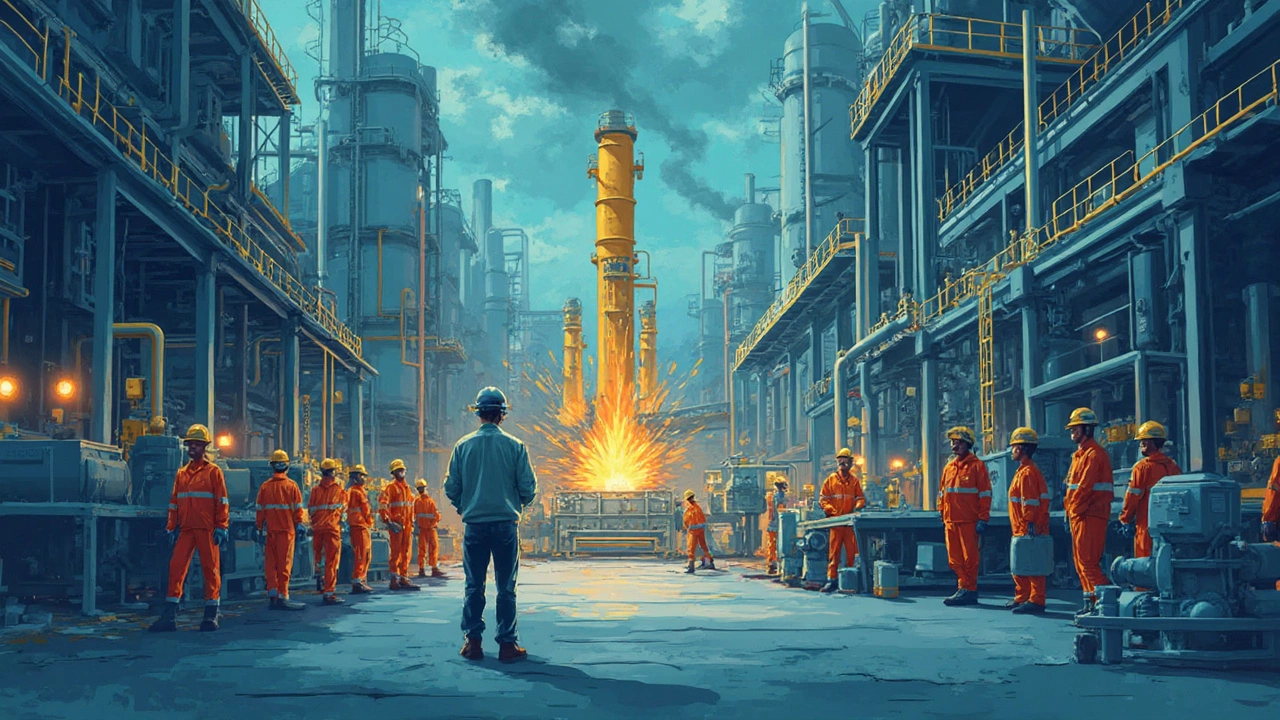Indian chemical industry
When looking at the Indian chemical industry, the backbone of manufacturing, agriculture and healthcare in the country. Also known as India’s chemicals sector, it supplies raw materials for everything from fertilizers to polymers. Plastic manufacturing, the process of turning petro‑chemical resin into everyday items like bottles and packaging relies heavily on locally produced polymers, making it a direct off‑shoot of the chemical industry. Likewise, the pharmaceutical sector, companies that turn active ingredients into medicines draws its essential APIs and excipients from Indian chemical plants. The textile dyes, colorants used in fabric processing are another major output, feeding the country’s massive garment factories. Finally, sustainable chemicals, bio‑based or low‑environmental‑impact compounds are reshaping supply chains and regulatory compliance. In short, the Indian chemical industry encompasses plastic manufacturing, fuels pharmaceutical growth, dyes textiles, and drives sustainable innovation.
Understanding the Indian chemical industry means recognizing three core dynamics. First, domestic demand for plastics surged by over 12% in 2023, pushing manufacturers to seek locally sourced polymer grades to cut import costs. Second, the pharma boom – driven by rising health awareness and export incentives – has doubled the need for high‑purity chemicals, prompting many firms to upgrade to GMP‑certified facilities. Third, sustainability is no longer a buzzword; the government’s Green Chemistry Mission targets a 30% increase in bio‑based chemical production by 2026, urging firms to adopt renewable feedstocks and waste‑recovery loops. These trends intersect: greener polymer production lowers environmental footprints for both packaging makers and drug manufacturers, while advanced dye chemistry reduces water usage in textile mills. Companies that can align these strands gain a competitive edge, as shown by recent case studies where integrated chemical‑to‑product strategies lifted margins by 8‑10%.
Key trends shaping the sector
Looking ahead, several forces will dictate how the Indian chemical industry evolves. Digital twins and AI‑driven process controls are already optimizing yield in large‑scale reactors, a shift echoed in the AI chips article that highlighted India’s move toward indigenous hardware. Meanwhile, trade policies favoring regional supply chains are encouraging exporters to source more inputs locally, tightening the link between chemical producers and downstream manufacturers such as the plastic hubs in Texas‑style state comparisons. Investment flows into specialty chemicals – the high‑margin niche that supplies cosmetics, agro‑chemicals and high‑performance polymers – are outpacing bulk commodity growth, reflecting a market pivot toward value‑added products. Finally, regulatory pressure on plastic waste is prompting a surge in recyclable resin development, directly tying back to the “which industry uses the most plastic” discussion. Together, these elements create a ecosystem where the Indian chemical industry not only supports but also accelerates the growth of related sectors featured in our post collection below. Dive into the articles to see how heavy‑equipment giants, high‑demand product trends, and manufacturing best‑practices intersect with the chemical landscape.
